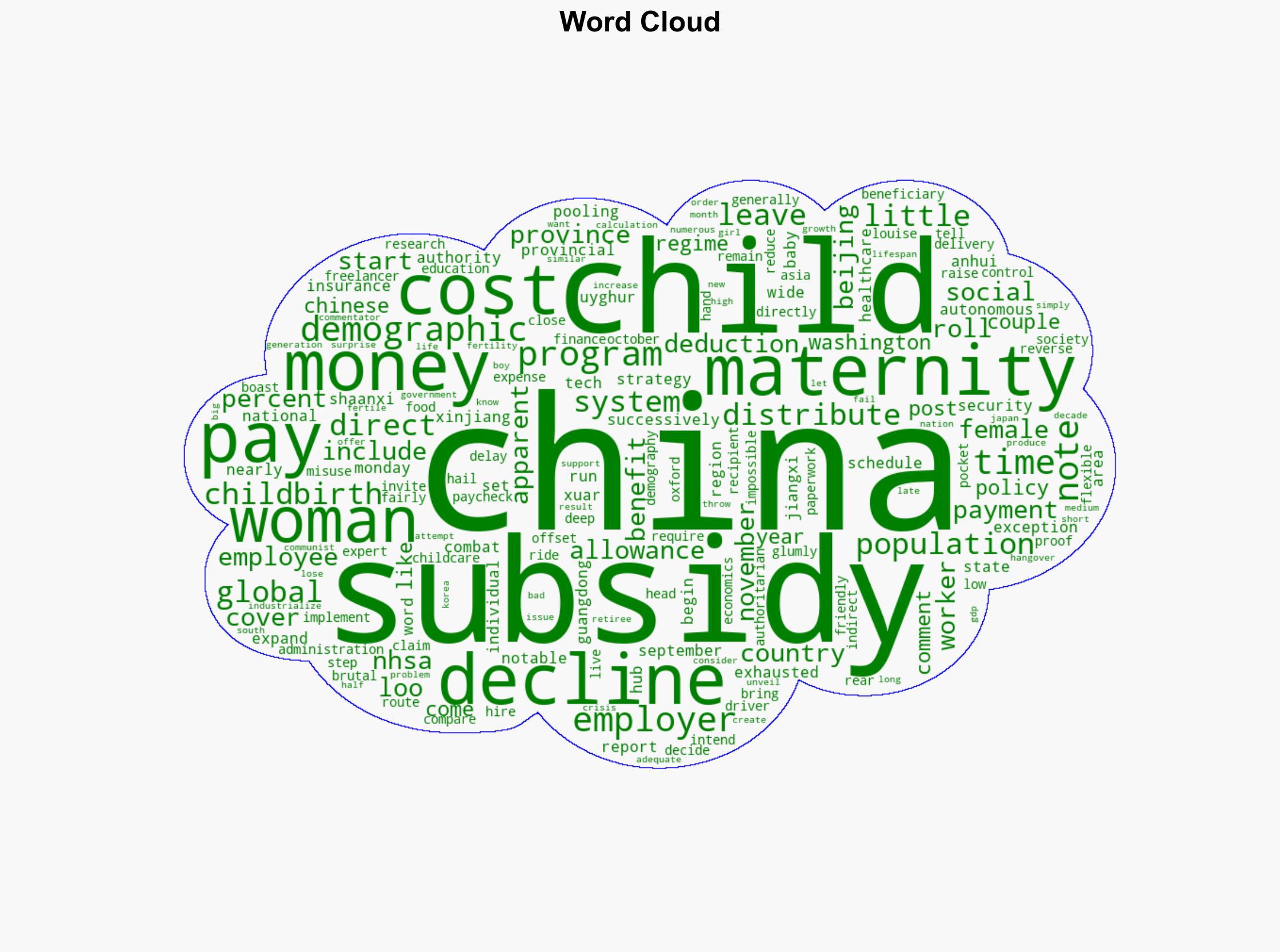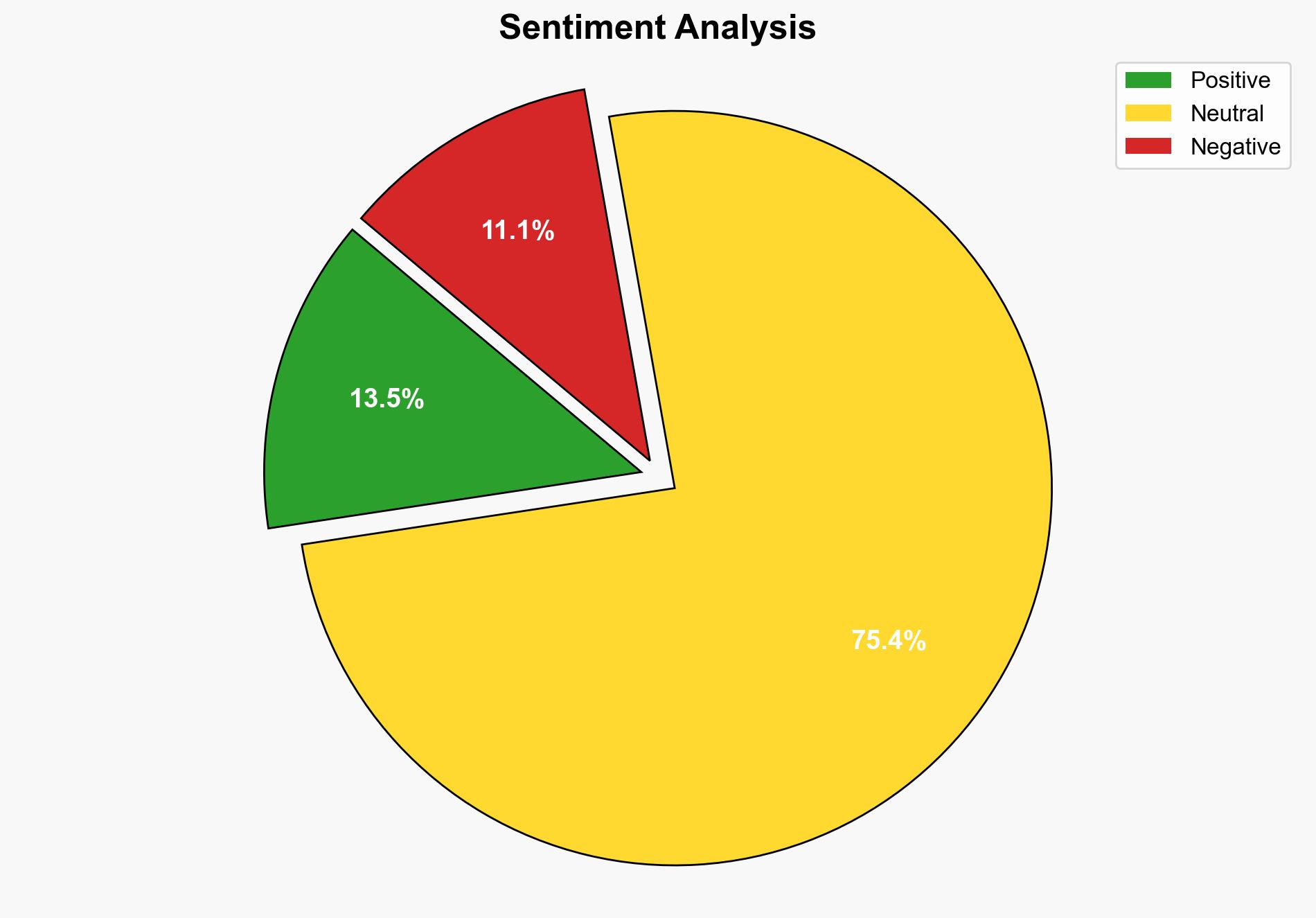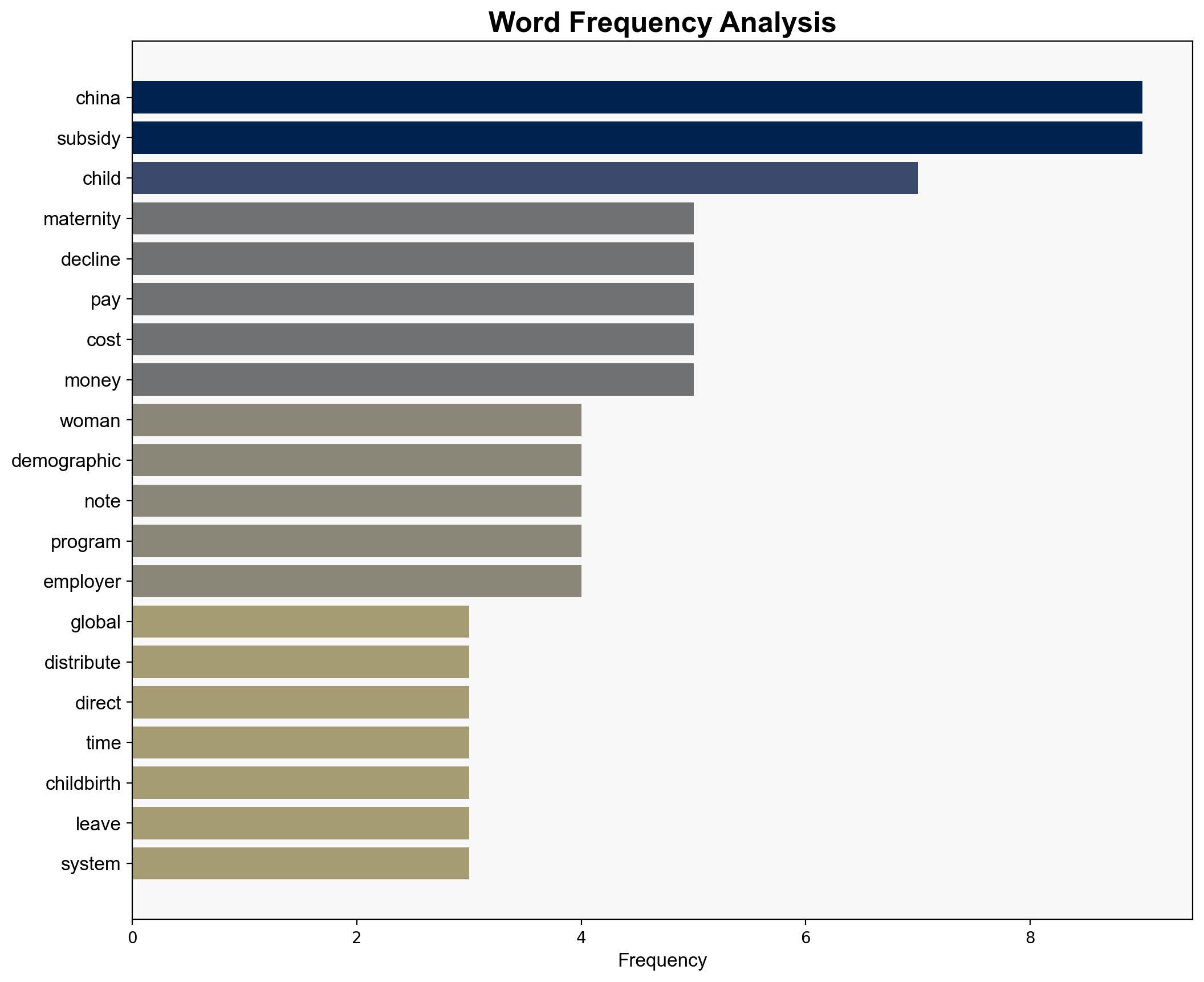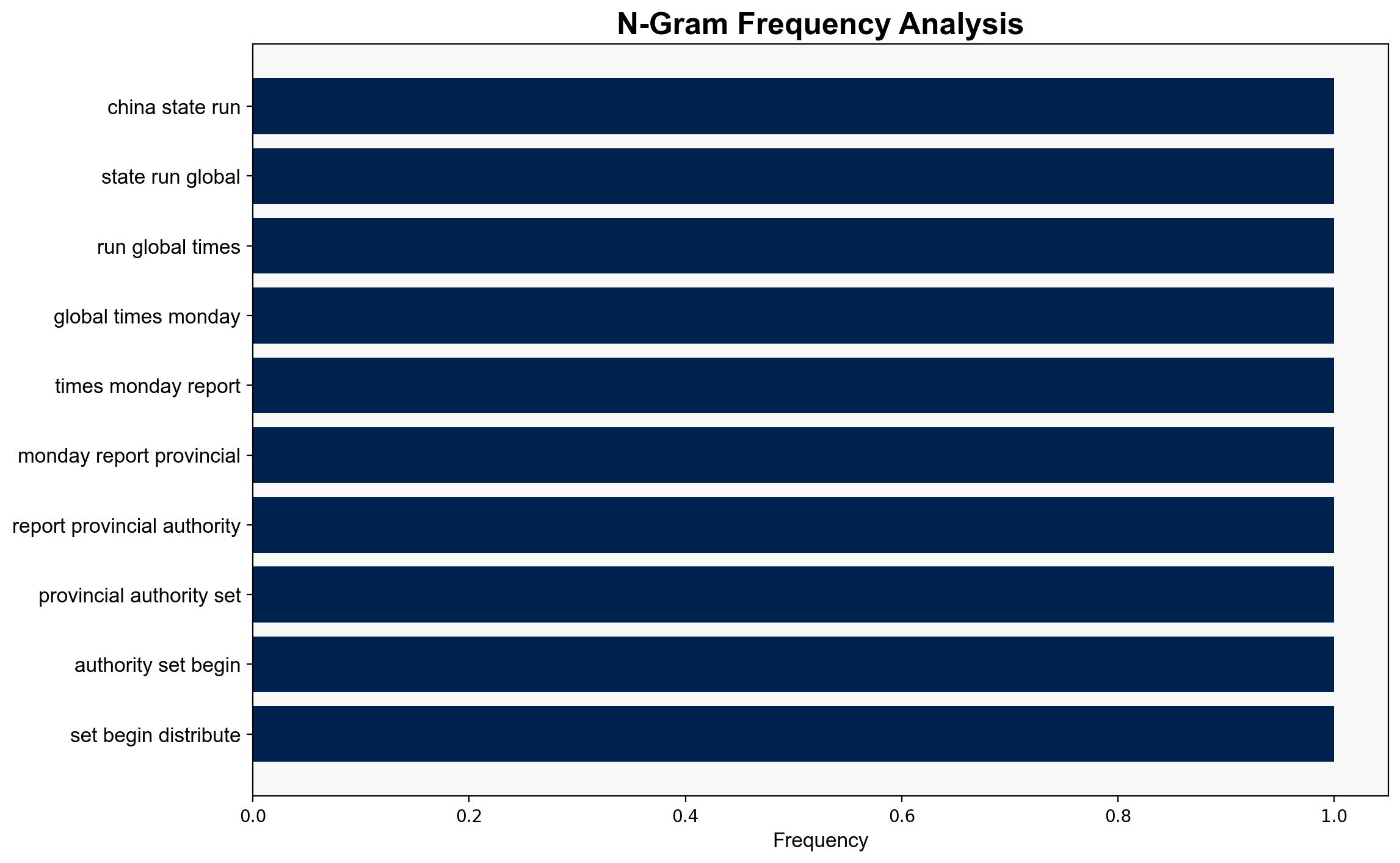China Begins Paying Women to Have Babies – Breitbart News
Published on: 2025-10-21
Intelligence Report: China Begins Paying Women to Have Babies – Breitbart News
1. BLUF (Bottom Line Up Front)
China’s initiative to provide direct maternity allowances to women is a strategic response to its demographic decline. The most supported hypothesis is that this measure is part of a broader attempt to stabilize population growth and mitigate long-term economic impacts. Confidence in this hypothesis is moderate due to potential implementation challenges and historical inefficacy of similar programs. Recommended action includes monitoring the program’s impact on demographic trends and assessing potential economic and social outcomes.
2. Competing Hypotheses
1. **Hypothesis A**: The direct maternity allowance is a genuine effort by China to combat demographic decline by incentivizing childbirth, aiming to stabilize the population and sustain economic growth.
2. **Hypothesis B**: The initiative is primarily a political maneuver to project an image of proactive governance, with limited expectation of reversing demographic trends due to systemic and cultural barriers.
Using the Analysis of Competing Hypotheses (ACH) 2.0, Hypothesis A is better supported by the strategic nature of the policy and its alignment with China’s long-term economic goals. However, Hypothesis B remains plausible due to historical challenges in altering demographic trends through financial incentives alone.
3. Key Assumptions and Red Flags
– **Assumptions**: It is assumed that financial incentives alone can significantly influence birth rates. It is also assumed that the program will be implemented effectively without significant misuse or delay.
– **Red Flags**: Potential misuse of funds by employers and the exclusion of key regions like Beijing and Guangdong may undermine the program’s effectiveness. The low subsidy amount relative to the cost of raising a child is another concern.
4. Implications and Strategic Risks
The program’s success or failure could influence China’s economic stability and global economic dynamics. A failure to reverse demographic decline may lead to increased economic strain and social unrest. Conversely, successful implementation could stabilize labor markets and support economic growth. The exclusion of major regions could lead to regional disparities and social tensions.
5. Recommendations and Outlook
- Monitor the implementation and impact of the maternity allowance program across different regions.
- Assess the program’s influence on demographic trends and economic indicators.
- Scenario-based projections:
- **Best Case**: Successful increase in birth rates stabilizes population growth and supports economic sustainability.
- **Worst Case**: The program fails to impact birth rates significantly, exacerbating economic and social challenges.
- **Most Likely**: Moderate impact with regional disparities, requiring additional policy adjustments.
6. Key Individuals and Entities
– Louise Loo, Head of Asia Research at Oxford Economics, provides critical insights into the economic implications of demographic trends.
– The National Healthcare Security Administration (NHSA) is responsible for implementing the subsidy program.
7. Thematic Tags
demographic trends, economic policy, regional disparities, social stability





